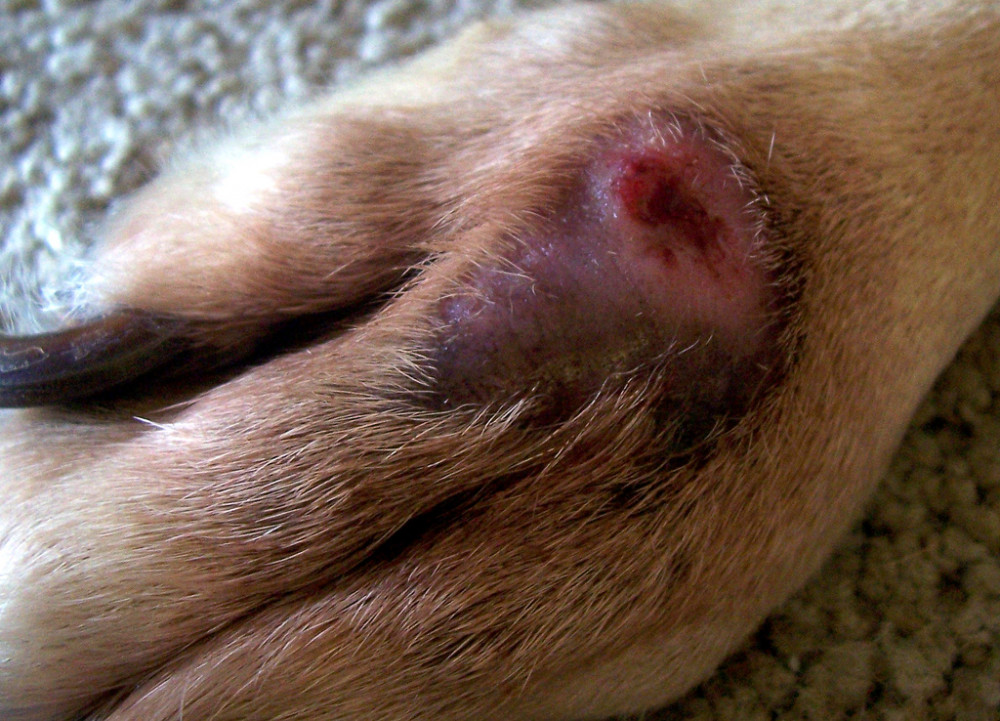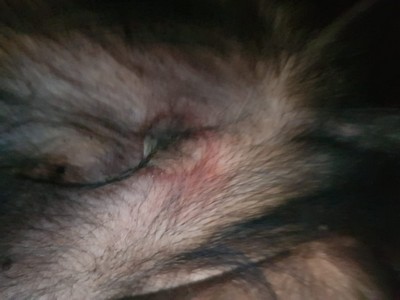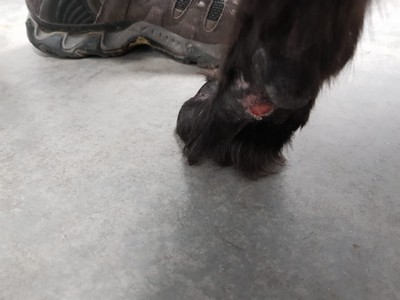Do you need help?

Flat-coated retriever Nero given slim chance of survival but he defied the odds
A brave dog fought off the rare and usually fatal disease Alabama rot – thanks to his quick-thinking owners and the help of our emergency vets.
The mysterious disease usually leads to serious kidney failure and it’s very rare for a dog to survive it.
But flat-coated retriever Nero showed all the battling qualities of his Roman emperor namesake to pull through after nine long days in emergency care.
Alabama rot – named after the American state where it was first detected – often begins as a deceptively innocent-looking cut on a dog’s skin.
We’ve compiled a list of the most commonly-asked questions about the disease.

In Nero’s case, it started with a lesion on his hind leg which owner Angela and her husband Phil thought had been caused by a stick while Nero was out on a walk.
But then a second lesion developed in his groin followed worryingly by a third on his foot.
Angela, from New Alresford, Hampshire, was already familiar with Alabama rot from reading about it online but never dreamt her dog might one day be affected by it.
After Googling the symptoms of Alabama rot, Angela realised what serious danger he was in. Nero did not seem to be particularly ill in himself, though he was definitely subdued, but she and Phil did not want to take any chances if he had contracted this potentially fatal condition.
So they immediately got in touch with the nearby Vets Now pet emergency clinic in New Alresford, near Winchester.

Nero was admitted straight away by vet Amy Bostock and her team. Amy immediately put him on a drip to keep his fluids up to try to offset any possible kidney issues.
She then carried out a series of blood tests and clipped and cleaned Nero’s wounds.
After closely monitoring Nero for six hours, Amy decided that he was stable enough to be transferred to one of just two specialist Alabama rot treatment centres in the UK.
One is at the Royal Veterinary College, in London, and the other is Anderson Moores, in Winchester.
Angela and Phil opted for Anderson Moores as it was close to home and they were comfortable with the plans outlined by the team there for treatment of Nero.
For the next eight days, staff kept Nero’s kidneys under constant monitoring and gave him antibiotics to fight the lesions on his skin, which were the outward manifestations of blocked blood vessels caused by Alabama rot.

Slowly but surely Nero’s condition improved to such an extent that he was allowed home – although to start with he had to go back to his regular vet in Alton for a check-up three times a week, and still needed to wear a collar to prevent him removing the dressings and licking the wounds.
Now though, six weeks later, Nero is collar-free, has a clean bill of health – and is back to doing what he does best: noisily whacking his tail against doors and furniture to show how happy he is!
Angela said: “The staff at Vets Now were incredibly kind and thoughtful. We were there for six hours and they made us regular cups of tea and gave a lot of reassurance.
“Phil and I were both very upset – Nero is a huge part of our lives and the thought of losing him was just unbearable – the staff did a very good job of looking after us, as well as him.
“Alabama rot really is a very frightening disease – partly because the prognosis for most dogs who get it is so bleak and partly because so little is known about it.
“Nero really did get the very best of care – both at Vets Now and Anderson Moores, where they did a terrific job of nursing him over those eight days and kept in constant touch with us.
“When you look at him now you wouldn’t even get a clue of how ill he’d been – or how lucky he has been to survive, and he, of course, is blissfully unaware of it all. He just thinks it’s great going to the vet because he gets a treat!”

Vets Now’s professional standards director, Laura Playforth, said it’s important that dog owners remain calm, but vigilant, for signs of Alabama rot.
She added: “The most obvious signs of Alabama rot are unexplained skin lesions. They’re often circular and typically appear on the lower leg, below the elbow or knee.
“The lesions may look like a swelling or ulcer. Dogs affected are likely to lick the wounded area and it will become hairless. The lesions are likely to be followed by kidney failure, which is typically accompanied by vomiting, tiredness and lack of appetite. These signs can take up to 10 days to the present.
“It’s wonderful to hear Nero is better. If anyone is ever concerned about a suspicious lesion and the possibility of Alabama rot in a dog then they should do what Angela did and get in touch with their vet immediately.”
Our pet emergency clinic in New Alresford is one of a nationwide network of Vets Now clinics and hospitals open through the night, seven days a week, and day and night at weekends and bank holidays.
All of Vets Now’s out-of-hours clinics and 24/7 hospitals have a vet and a veterinary nurse on site at all times.
